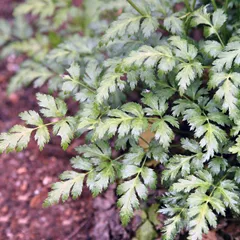Heat invading the Pericardium
The information provided here is not a replacement for a doctor. You shouldn't use it for the purpose of self-diagnosing or self-medicating but rather so you can have a more informed discussion with a professional TCM practitioner.
At a glance
Preliminary reading: What is a pattern?
Diagnosis
Common symptoms: Fever Irritability Restlnessness Delirious speech Impaired consciousness and one other symptoms
Pulse type(s): Fine (Xi), Rapid (Shu), Wiry (Xian)
Tongue color: Reddish-Purple
Treatment
Common formulas: Niu Huang Qing Xin Wan
Pathology
Heat invading the Pericardium is a pattern of disharmony in Chinese Medicine.
Chinese Medicine views the human body as a complex system that tends toward harmony. A pattern of disharmony is a disorder that prevents that harmony from occurring.
Patterns give rise to symptoms that may at first glance seem unrelated from a Western standpoint but that actually make a lot of sense when one understands Chinese Medicine theory. For instance here Heat invading the Pericardium gives rise to such diverse symptoms as fever, irritability, restlnessness and general sensation of unease (as well as two others).
To diagnose a pattern, analyzing a patient's pulse as well as their tongue is common practice. In the case of Heat invading the Pericardium patients tend to exhibit fine (Xi), rapid (Shu) or wiry (Xian) pulses as well as a reddish-purple tongue.
Patterns aren't exactly the Chinese Medicine equivalent to Western diseases, they're rather the underlying causes behind diseases or health conditions. Here Heat invading the Pericardium is thought to sometimes induce conditions such as aphthous ulcers, viral encephalitis, meningitis or pertussis.
Diagnosing Heat invading the Pericardium
Diagnosing a pattern in Chinese Medicine is no easy feat and should be left to professional practitioners. In particular one has to know how to differentiate between different types of pulses and tongue coatings, shapes and colors as well as learn to read from a long list of seemingly unrelated symptoms.
Pulse type(s): Fine (Xi), rapid (Shu) or wiry (Xian)
Tongue color: Reddish-Purple
Main symptoms: Fever Irritability Restlnessness Delirious speech Impaired consciousness General sensation of unease
Treating Heat invading the Pericardium
Herbal formulas used to treat Heat invading the Pericardium



The top herbs in Niu Huang Qing Xin Wan are Ox Gallstones (Niu Huang), Goldthread Rhizomes (Huang Lian) and Baikal Skullcap Roots (Huang Qin)
Niu Huang Qing Xin Wan
Source date: 1568 AD
Number of ingredients: 6 herbs
Key actions: Clears Heat and resolves Toxicity. Calms the Mind. Opens up the Orifices.
Formula summary
Niu Huang Qing Xin Wan is a 6-ingredient Chinese Medicine formula. Invented in 1568 AD, it belongs to the category of formulas that clear Heat and open sensory orifices.
Related conditions
Please keep in mind that a Western Medicine condition can be caused by several Chinese Medicine patterns of disharmony and vice versa. As such a patient suffering from one of the conditions below will not necessarily be suffering from Heat invading the Pericardium, it is just one pattern that's commonly associated with the condition. Click on a condition to learn what other patterns it's associated with.
